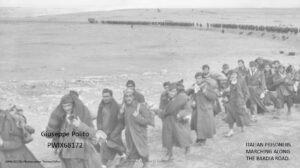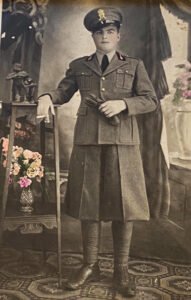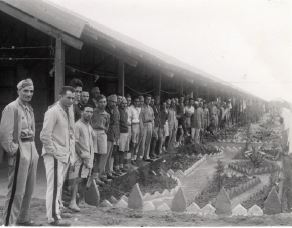The two lives
of prisoners of war

[GTranslate]SACCO (Salerno) – There have been men who have lived several lives, despite themselves. Lives that are also radically different from each other. “Jokes” of the war, one would say in the case of Giuseppe Polito, born in Sacco (a town in the province of Salerno) in 1914, Italian until 1941, then Indian and Australian until 1946 and, finally, again Italian for the rest of his days.
To reconstruct the story is Silvio Masullo, a fellow citizen of Polito: profession, general secretary of local authorities, but Masullo is also a journalist and writer. And his passion for research led him to find, about a month ago, in Australia the personal documents of Polito, who was taken prisoner on 4 January 1941 in Bardia where the allies, commanded by an Australian general, defeated the Italians in the former Libyan colony.
“I found those documents thanks to the Australian historian Joanne Tapiolas – explains Masullo -: I had in fact come across one of her publications from 2017, ‘Walking in their Boots: Italian Prisoners of War in Queensland 1943-1946’ and, from there, I managed to rebuild everything ” (read the documents consulted by Masullo, here: Giuseppe Polito and the italian prisoners).

We thus discover that Giuseppe Polito (in the pic), after that battle, ended up prisoner as happened to other 36,000 soldiers (some historians have even calculated 40,000) captured by the allied army led by the Australian general Iven MacKay. And he returned to Italy only at the end of ’46. But where was he taken and how did he live all those years? “It was precisely this that intrigued me – continues Masullo -: I had only the generic information of an Australian destination, which he sometimes spoke to a vaguely interested audience. We were curious about his habit of drinking tea with peanuts, making it fall from above with harmonious and rhythmic movements, an evident legacy of a previous life. After several unsuccessful attempts, directed to a series of prison camps, I succeeded thanks to the Australian historian Joanne Tapiolas ”.
And what came out of it is a story that is in fact unknown but common to thousands of other Italians: just think that in the period 1941-1944 about 18,000 Italian prisoners arrived in Australia, mostly employed in farms and in government irrigation projects, and that when the war was over, ten percent of these returned with the sponsorship of the families for which they had worked. Situations light years away from those of the Italian soldiers interned in Nazi concentration camps. “The humanity of Australians is demonstrated not only by the significant number of returns after 1950, but also by the fact that 92 Italians were unavailable when they returned home”, Masullo explains.

The beginning of his captivity, however, was not easy for Polito. “From 1941 to 1945 Giuseppe’s news is less timely. He had been transferred from an Anglo-Egyptian prison camp to India (in the pic), an italian prisoners camp in India – from the collection of the ICRC). The inmates were treated by the jailers in an acceptable, not inhumane manner, but the climatic conditions were not bearable, in addition to food, poor quality water, inadequate health care. Many fell ill with typhus, malaria and beriberi and lost their lives”.
The prospects and living conditions were decisively reversed in Australia. Embarked in Bombay on the ship “General William Mitchell”, with 2,076 other compatriots, he arrived in Australia, at the port of Melbourne, on February 13, 1945. “There he was identified as PWIX (Prisoner of war Italian profascist) 68172 and was assigned with another 155 comrades in Karrakatta in reconversion of post-war areas and materials from 24 February to 25 July 1945. The last stop, on 25 July 1945, was the most welcome: a farm in Dalwallinu where he found the ideal context for those who, like him, he had always dedicated himself to work in the fields”.

The war had been over for three months now and Giuseppe was treated like a member of the family: he was given a tractor to plow, he looked after the cattle and was also paid a salary. “The host family – Masullo (in the pic) says – had every form of concern for him, like when they replaced the bacon he didn’t like with another salami”.
Then, it was time to return. Giuseppe was embarked on the Chitral on 30 September 1946, with other 2,797 compatriots (of which 51 officers) who landed in Naples on 30 October. In the village he found his wife Amelia, his son Carmine (Antonio was born two years later) and his work in agriculture. “And he stayed, not accepting the invitation of the Australian farm, which had not forgotten its seriousness at work, to emigrate to the continent of kangaroos”.
However, he will always keep an affectionate memory of Australia. “From there – concludes Masullo – he had brought an embroidery of his own production, with a strong religious and symbolic value. It depicted the Madonna degli Angeli, who enjoys great devotion in the village and is celebrated on 2 August, the most important date of the year for the people of Sacco, who return from half the world to participate in the procession through the streets of the town “.
In the pic below, from the right: Giuseppe Polito, his wife Amelia and other family members (pic by Eliana Di Matteo)



